Aulonocara maulana
Scientific name: Aulonocara maulana
Common name: N/A
Family: Cichlidae
Usual size in fish tanks: 9 - 10 cm (3.54 - 3.94 inch)
014
Recommended pH range: 8 - 8.5
Recommended water hardness: 12 - 18°N (214.29 - 321.43ppm)
0°C 32°F30°C 86°F
Recommended temperature range: 23 - 29 °C (73.4 - 84.2°F)
The way how these fish reproduce: Spawning
Where the species comes from: Africa
Temperament to its own species: aggressive/territorial
Temperament toward other fish species: aggressive to smaller
Usual place in the tank: Middle levels
Origin
These fish are endemic to Lake Malawi where they inhabit the open waters with sandy substrates.
Short description
Aulonocara maulana belong to 23 species of fish that are commonly known as Peacock cichlids. The most common name used for this species is the Maulana bicolour peacock although they are sometimes referred to as bi-colour 500. They tend to inhabit the open waters of Lake Malawi in small groups but will sometimes use the rocky areas for hideaways when they feel threatened. Compared to other peacock cichlids they are on the smaller size, adult specimens tend to reach an average length of up to just under 4 inches (10cm) and display a bluish colouration at the front of their bodies with a yellow band that runs to the rear of the body. Compared to some species of cichlids that inhabit Lake Malawi they are classed as being one of the more peaceful species and make a good species for novice keepers to care for.
They are very undemanding fish and caring of them is quite easy but like all fish they do require high water quality. There may be slight colour variations between specimens but they are instantly recognisable and are very popular in the aquarium trade.
Lifespan
If cared for correctly the average lifespan for these fish is between 10-15 years.
General care
Aulonocara maulana are not difficult to care for if you follow basic rules to keep their health at it’s best so make a good species for novice fish keepers to Malawi aquariums. A small group will do better than a couple of specimens so the minimum recommended size aquarium should be capable of holding at least 100 gallons. It is best to use sand for the substrate and place some rocks at the rear of the aquarium to create hiding places and replicate their natural surroundings.
They will require alkaline water water so the pH should range between 8.0-8.5 and set the water flow to a moderate pace by positioning of the outlets from the filters. The temperature should range between 23-29°C (73-84°F) and the lighting should be moderate.
Like most cichlids they are high waste producers so regular water changes should be performed, at least 10% weekly.
It is best to keep these with other members of the peacock family and definitely avoid keeping them with Mbuna species which can be highly aggressive to other tank mates.
One male should be housed with several females so that a harem can be created and this will prevent one female being over harassed especially at spawning times.
Feeding
Not a difficult species to feed, for the staple diet offer quality cichlid pellets or a quality flake but this must be varied with plenty of meaty foods such as daphnia, blood worms or brine shrimp. To avoid Malawi bloat which can be caused by overfeeding it is best to refrain from adding food to the aquarium one day per week.
Sexing
Mature males will display a much brighter colouration, their vertical barring will be more prominent and mature females will have rounded dorsal and anal fins.
Breeding
These are not too difficult a species to breed providing they are given the correct conditions. It is best to use a separate breeding tank to prevent any distractions and aggression in the main aquarium. Use an air driven sponge filter to control the water flow and for ease of maintenance and add a few rocks to provide cover for the females. They are maternal mouthbrooders, the female will incubate the eggs in her mouth and hold the fry until they are large enough to be released.
Keep two females to every male and condition the parent fish on meaty foods for a couple of weeks prior to spawning.
When spawning commences the female will deposit her eggs and then scoop them up into her mouth. She will then approach the analfin of the male and nudge him so that he can release the milt which she will also take into her mouth for fertilisation.
Incubation and allowing the fry to grow may take up to 3 weeks, during this time the female will not feed and she may hide away a lot. Any stress may cause her to spit out the fry early thus putting them at risk.
Once they are large enough to feed the fry will be released and after this the female should be rested for 3-4 weeks to allow her to rebuild her strength before using her for the next spawning project.

 Thread-finned
Thread-finned 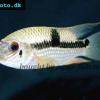 Acara
Acara  Yellow
Yellow  Patrick's
Patrick's  Blue
Blue  Green
Green 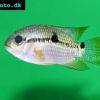 Acara
Acara  White
White  Compressed
Compressed 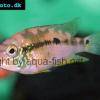 Pastel
Pastel  Midas
Midas  Red
Red  Bluemouth
Bluemouth  False
False 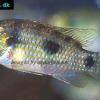 African
African  Agassiz's
Agassiz's  Banded
Banded 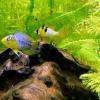 Yellow
Yellow  Cockatoo
Cockatoo  Blue
Blue  Blackstripe
Blackstripe  Highfin
Highfin  Redstripe
Redstripe  Threadfinned
Threadfinned  Macmaster’s
Macmaster’s 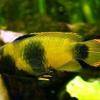 Panda
Panda  Norbert’s
Norbert’s 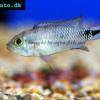 Blue
Blue  Thin-line
Thin-line  Three-striped
Three-striped  Viejita
Viejita 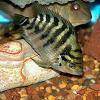 Flier
Flier  Archocentrus
Archocentrus  Convict
Convict  Seven
Seven  Spiny
Spiny  Oscar
Oscar  Sunshine
Sunshine  Chitande
Chitande  Firebird
Firebird  Midnight
Midnight  Lake
Lake  Sunshine
Sunshine  Nyasa
Nyasa 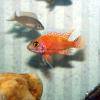 Ruby
Ruby  Grants
Grants  Aulonocranus
Aulonocranus  Chameleon
Chameleon  Benitochromis
Benitochromis  Orinoco
Orinoco  Yellow
Yellow 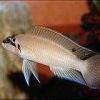 Brichard’s
Brichard’s  Guenther’s
Guenther’s  Southern
Southern  Cichla
Cichla 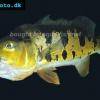 Peacock
Peacock  Chiseltooth
Chiseltooth  Bolivian
Bolivian  Red
Red  Many-pointed
Many-pointed  Jack
Jack  Red
Red  Three
Three 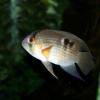 Keyhole
Keyhole  Azureus
Azureus  Red
Red  Jackson’s
Jackson’s  Crenicichla
Crenicichla  Honduran
Honduran  Blue-eye
Blue-eye  Afra
Afra 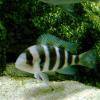 Frontosa
Frontosa  Slender
Slender  Malawi
Malawi  Chequerboard
Chequerboard  Checkerboard
Checkerboard  Malawi
Malawi  Ectodus
Ectodus  Tanganyika
Tanganyika  Canara
Canara  Green
Green  Rostratus
Rostratus  Pearl
Pearl 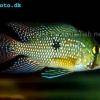 Geophagus
Geophagus  Yellowhump
Yellowhump  Suriname
Suriname  Redhump
Redhump  Red
Red  Dority’s
Dority’s  Argentine
Argentine 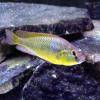 Burton’s
Burton’s  Victoria
Victoria 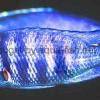 Haplochromis
Haplochromis  Jewel
Jewel  Banded
Banded 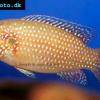 Lifalili
Lifalili  Lowland
Lowland  Texas
Texas  Pantano
Pantano  Severum
Severum  Banded
Banded 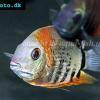 Severum
Severum  Rainbow
Rainbow  Parrot
Parrot  Chocolate
Chocolate  Brown
Brown  Marlieri
Marlieri  Golden
Golden  Striped
Striped  Masked
Masked 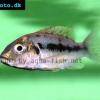 Konye
Konye  Blue
Blue  Trewavas
Trewavas  Electric
Electric  Dwarf
Dwarf  Redbreast
Redbreast  Lamprologus
Lamprologus  Gold
Gold 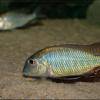 Greenface
Greenface 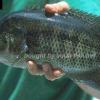 Mayan
Mayan  Aurora
Aurora  Blue
Blue  William’s
William’s 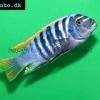 Zebra
Zebra  Malawi
Malawi  Blue
Blue 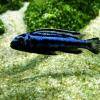 Blue
Blue  Mbuna
Mbuna  Parallel
Parallel  Purple
Purple  Flag
Flag  Bolivian
Bolivian  Ram
Ram  Basket
Basket 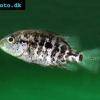 Haitian
Haitian  Zebra
Zebra  Striped
Striped  Neolamprologus
Neolamprologus  Brevis
Brevis  Fairy
Fairy 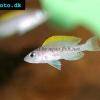 Neolamprologus
Neolamprologus  Cylindricus
Cylindricus  Hecq’s
Hecq’s  Neolamprologus
Neolamprologus  Lemon
Lemon  Mustax
Mustax  Daffodil
Daffodil  Six-bar
Six-bar  Five-bar
Five-bar  Marbled
Marbled 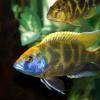 Giraffe
Giraffe  Blue
Blue  Sulphurhead
Sulphurhead  Wolf
Wolf  Jaguar
Jaguar  Blue
Blue  Marakeli
Marakeli  Madagascar
Madagascar  Pinstripe
Pinstripe  Pelmatochromis
Pelmatochromis  Kribensis
Kribensis 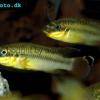 Striped
Striped  Red
Red  Deepwater
Deepwater  Fenestratus
Fenestratus  Nichols’
Nichols’  Southern
Southern  Bumble
Bumble  Demason’s
Demason’s  Slender
Slender  Red
Red  Mbuna
Mbuna  Malawi
Malawi  Kenyi
Kenyi  Powder
Powder  Altum
Altum  Angelfish
Angelfish  Angelfish
Angelfish 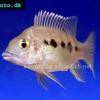 East
East  Juba
Juba  Earth
Earth 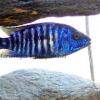 Electric
Electric  Azure
Azure  Lionhead
Lionhead  Discus
Discus  Blue
Blue  Red
Red  Zebra
Zebra  Brichard’s
Brichard’s  Blue
Blue  Firemouth
Firemouth  Zebra
Zebra  Yellow
Yellow  Blue
Blue  Dwarf
Dwarf  Blunthead
Blunthead 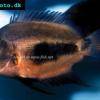 The
The  White
White  Twoband
Twoband  Fenestratus
Fenestratus  Window
Window  Tailbar
Tailbar  Black
Black  Redhead
Redhead 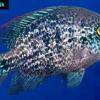 Oaxaca
Oaxaca  Xenotilapia
Xenotilapia